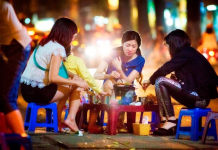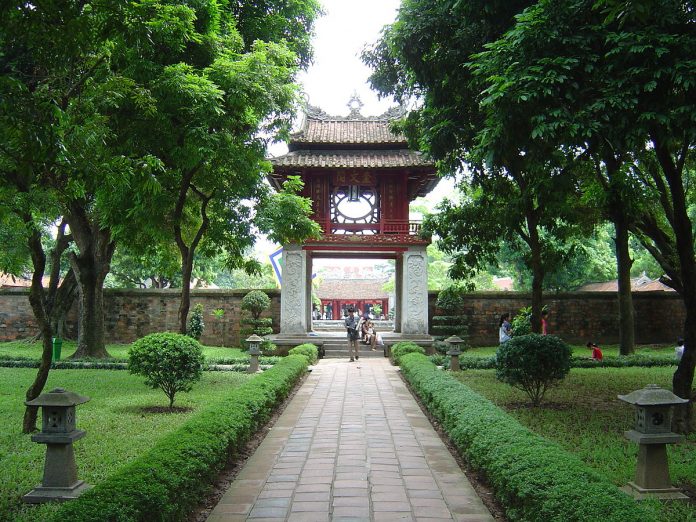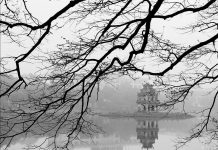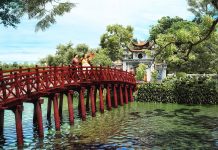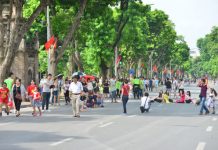>> Visit the official website of Van Mieu: http://vanmieu.gov.vn/en
Van Mieu Quoc Tu Giam (Hanoi Temple of Literature) is the oldest and biggest temple of literature in Vietnam. This place is not only a famoust tourist attraction but a place of belief and culture activities.
>> Read more other Things to do / What to see in Hanoi
The history of Van Mieu
The Temple of Literature (Vietnamese: Văn Miếu, Hán-Nôm: 文廟) is a Temple of Confucius in Hanoi, northern Vietnam. The temple hosts the Imperial Academy (Quốc Tử Giám, 國子監), Vietnam’s first national university. The temple was built in 1070 at the time of Emperor Lý Thánh Tông. It is one of several temples in Vietnam which is dedicated to Confucius, sages and scholars. The temple is located to the south of the Imperial Citadel of Thăng Long. The various pavilions, halls, statues and stelae of doctors are places where offering ceremonies, study sessions and the strict exams of the Đại Việt took place. The temple is featured on the back of the 100,000 Vietnamese đồng banknote. Just before the Vietnamese New Year celebration Tết, calligraphists will assemble outside the temple and write wishes in Hán characters. The art works are given away as gifts or are used as home decorations for special occasions.
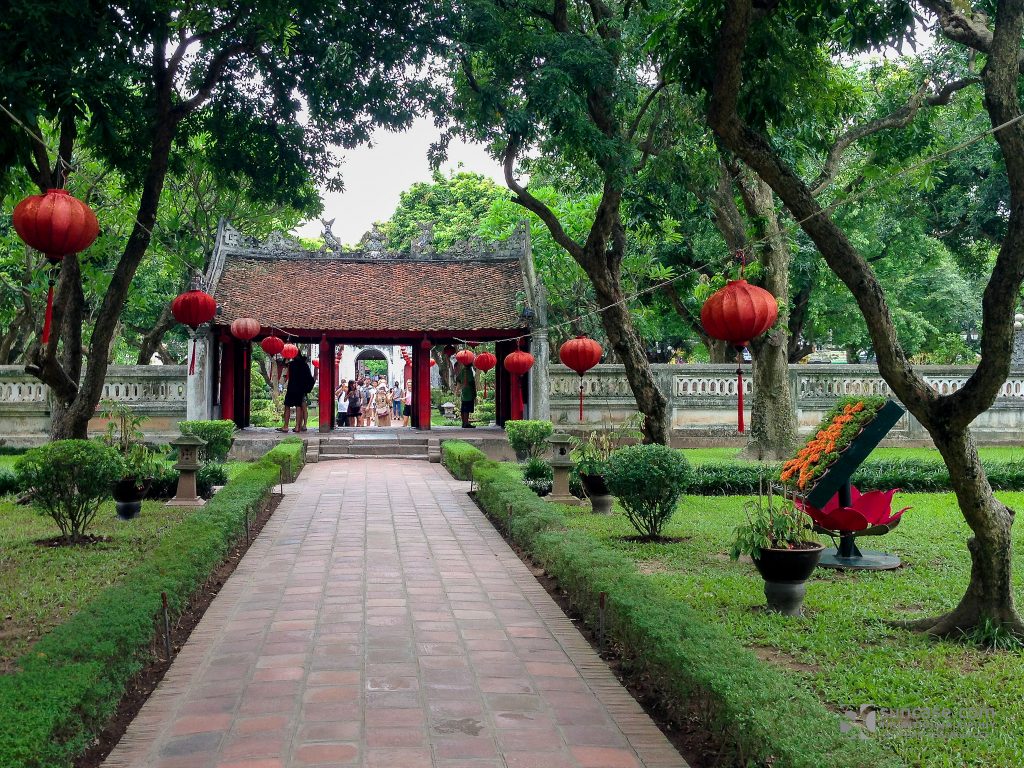
The temple was built in 1070 and was reconstructed during the Trần dynasty (1225–1400) and in the subsequent dynasties. For nearly two centuries, despite wars and disasters, the temple has preserved ancient architectural styles of many dynasties as well as precious relics. Major restorations have taken place in 1920, 1954 and 2000.
“In the autumn of the year Canh Tuat, the second year of Than Vu (1070), in the 8th lunar month, during the reign of King Lý Thánh Tông, the Văn Miếu was built. The statues of Confucius, his four best disciples: Yan Hui (Nhan Uyên), Zengzi (Tăng Sâm), Zisi (Tử Tư), and Mencius (Mạnh Tử), as well as the Duke of Zhou (Chu Công), were carved and 72 other statues of Confucian scholars were painted. Ceremonies were dedicated to them in each of the four seasons. The Crown Princes studied here.”
In 1076, Vietnam’s first university, the “Quốc Tử Giám” or Imperial Academy, was established within the temple to educate Vietnam’s bureaucrats, nobles, royalty and other members of the elite. The university remained open from 1076 to 1779. In 1802, the Nguyễn dynasty’s monarchs founded the Huế capital where they established a new imperial academy. The academy at the Hanoi temple lost its prominence and became a school of the Hoài Đức District.
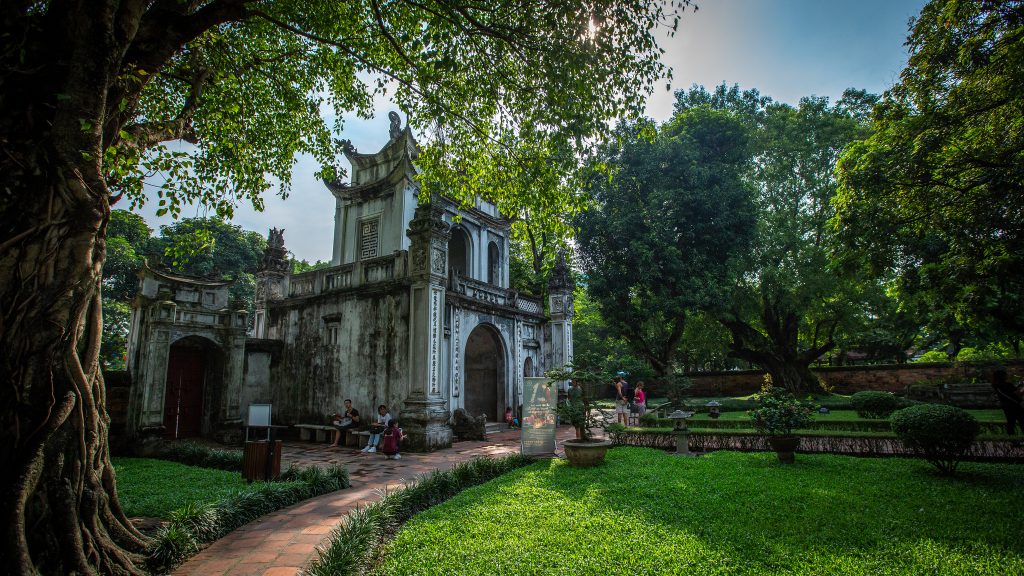
Under the French protectorate, the Văn Miếu – Quốc Tử Giám was registered as Monument historique in 1906. Campaigns of restoration were pursued in 1920 and 1947 under the responsibility of École française d’Extrême-Orient (French School of the Far East) and again after World War II.
The Emperor Lý Nhân Tông built the school. It was built in 1076 AD at the time of Emperor Lý Nhân Tông. It was built as a school for the rich and royals to study because education is very important. After that, it was used as university for everyone because there weren’t enough universities for everyone in Hanoi. They wanted that a lot of people would go to the school so they expanded to make more space for more people and since it was expanded for more people wanted to go to the school to study well. It was rebuilt because the wood that the Emperor used in the olden days had been so old that it started to break and fall apart. As the days went by, the kings kept replacing the wood and now we have replaced the wood with concrete or metal,stone and new wood. When the French ruled Vietnam at around 1945- 1954, they destroyed some parts of the temple to make room for the sick and wounded since the hospitals were full.
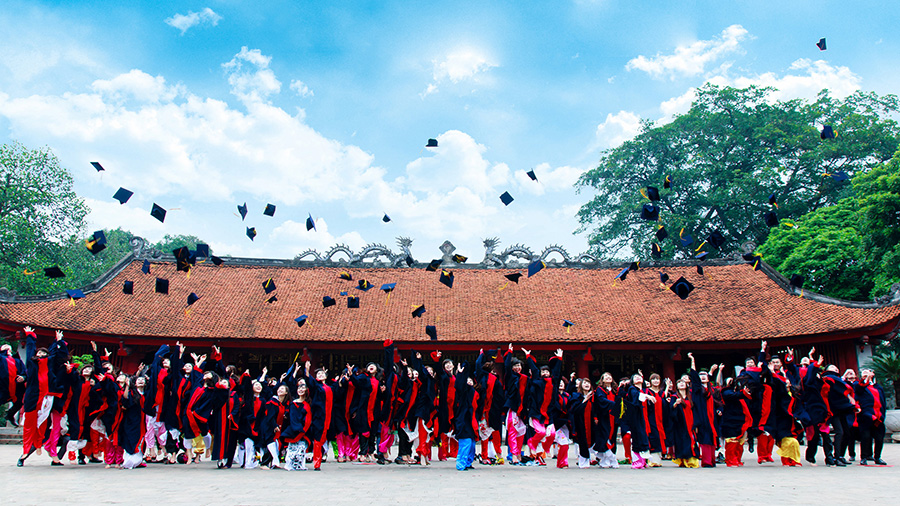
The Temple of Literature highlights
The Temple of Literature is a place of study rather than a religious landmark. There are five courtyards at the temple, two brimming with landscaped gardens, the third is home to a large pond known as the Well of Heavenly Clarity, the fourth courtyard is called the Sage Courtyard and features a statue of Confucius and a house of ceremonies, and the last courtyard is Thai Hoc in which stands a large drum and bell tower. This historic site is ranked as one of Hanoi’s most important cultural places and is steeped in Vietnamese history. The layout of the temple is based upon the birthplace of Confucius with a magnificent main entrance and a path, once reserved solely for the king, running through the centre. The immaculate gardens are rich in ancient trees and are considered a serene place in which students can relax. There are stone statues and inscriptions dotted throughout the temple which has retained many of its original features as the most renowned landmark of academia in Vietnam.
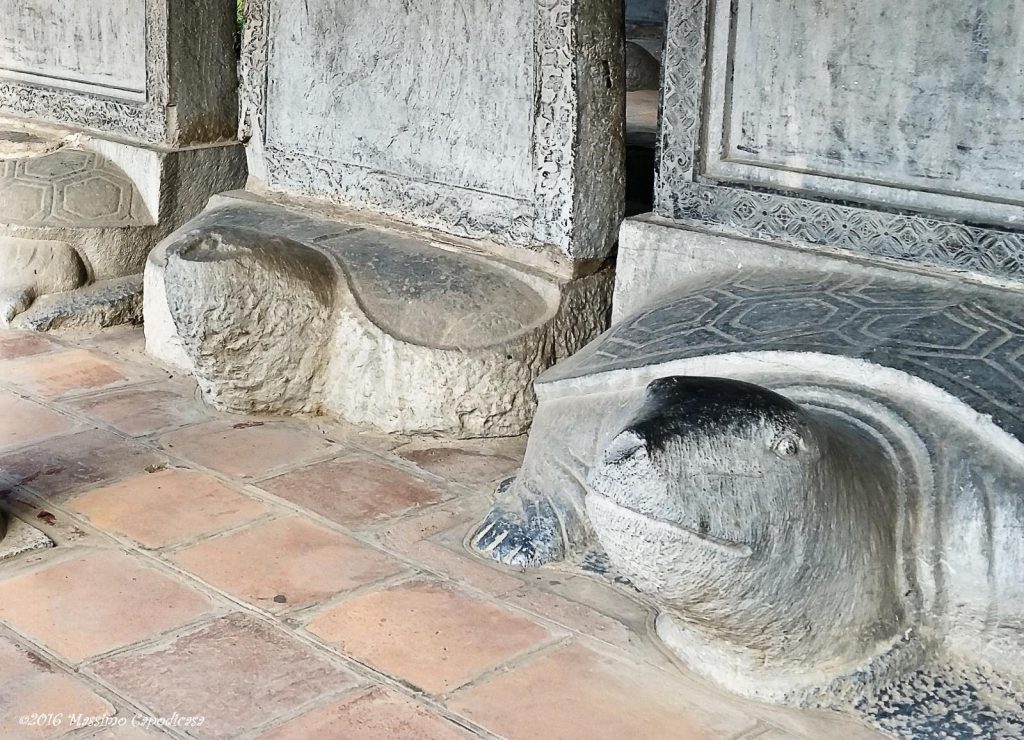
Rule of the tour
When paying a visit to the Special National Relic of Van Mieu – Quoc Tu Giam, you are kindly requested to strictly observe the followings:
1. Purchase and declare your ticket to the checking officers;
2. Raise a higher sense of responsibility in the protection of environment, architecture, sanitation and landscapes of the relic; do not lie, sit and touch the objects; do not inscribe and draw on the worship statutes, stone steles and architechtural works; do not walk on grass and pick flowers and tree branches;
3. Keep up the security and order and abide by the rules on protection and prevention of fire and explosion; do not smoke within the premises of the relic; do not carry weapons, murder gears, inflammables, poisons, explosives, live animals inside the relic;
4. When visitting the relic, wearing of suitable and smart clothes must be required; do not wear conical hat, cap, short skirt, single strip shirt or shorts inside the worship places; keep quiet in all the sacred areas;
5. Forbidden to make use of religious freedoms to practise acts of superstition, gambling, fraud or cheating;
6. Visitors must be held legal responsibilities for the losses and damage caused by themselves to the relic, subject to the existing law’s regulations;
7. Relic’s security guards shall have a right to immediately cancel the visitor’s tour of the relic, should he or she be found in violation of any of the above regulations;
8. Whenever incidentally find any negative acts, please help inform the relic’s security guards of the case accordingly via the phone numbers: 043.7471322/ 043.7472566.
DISCOVER OUR VIETNAM TOURS





